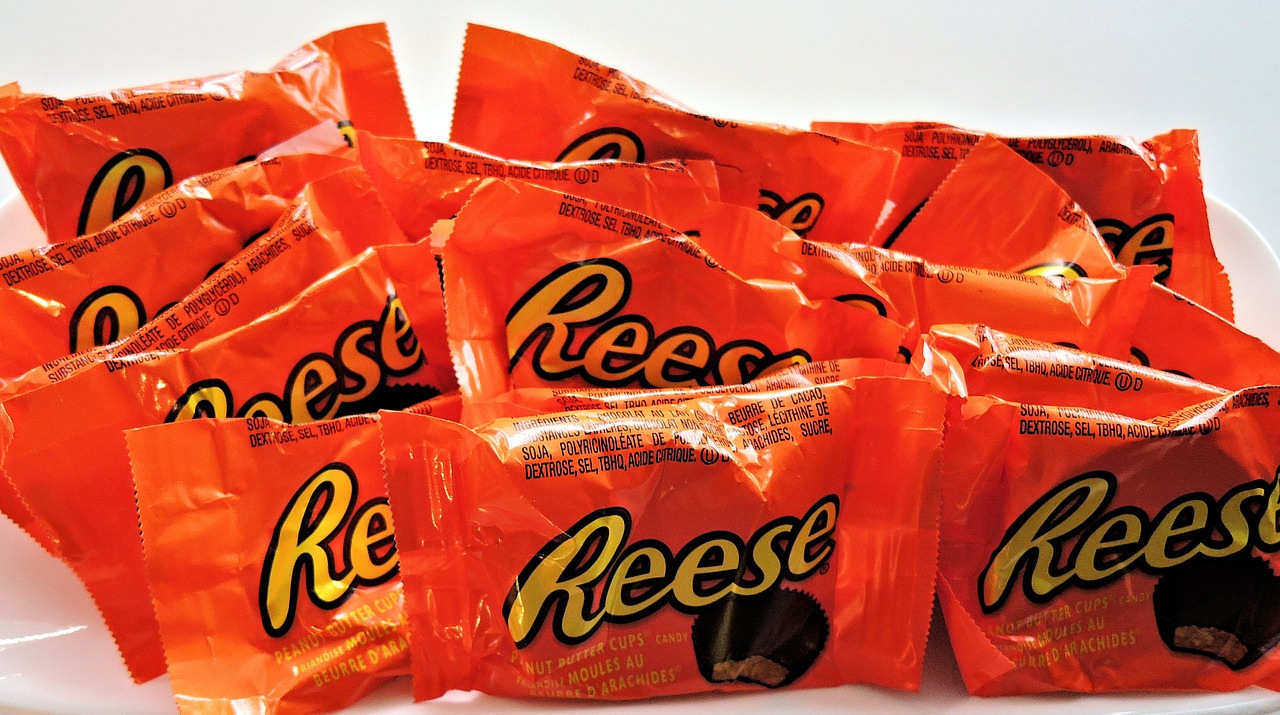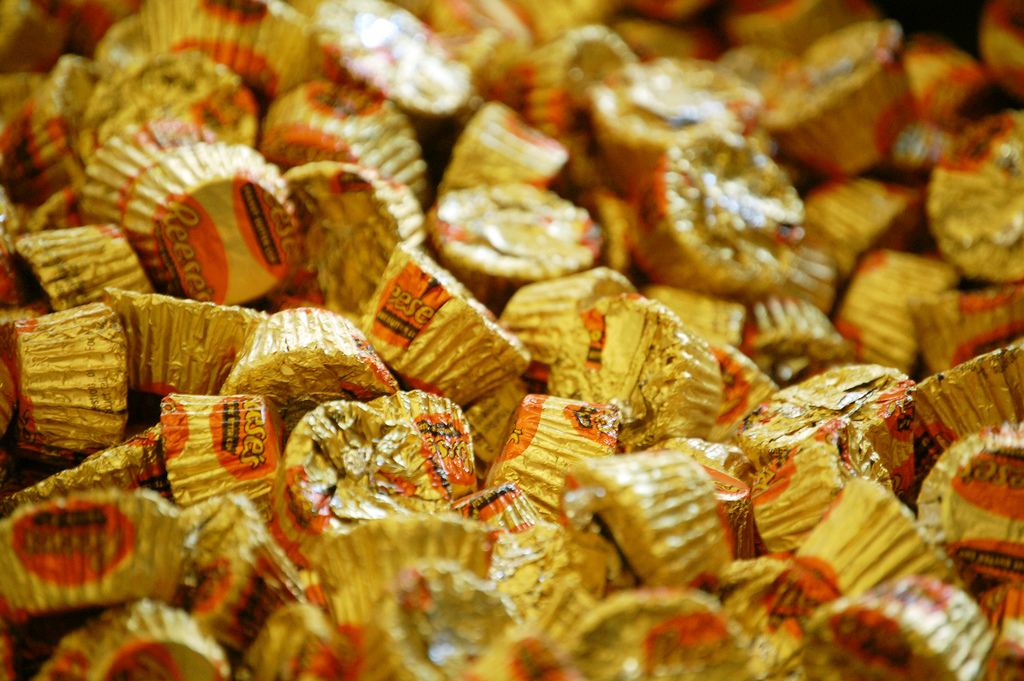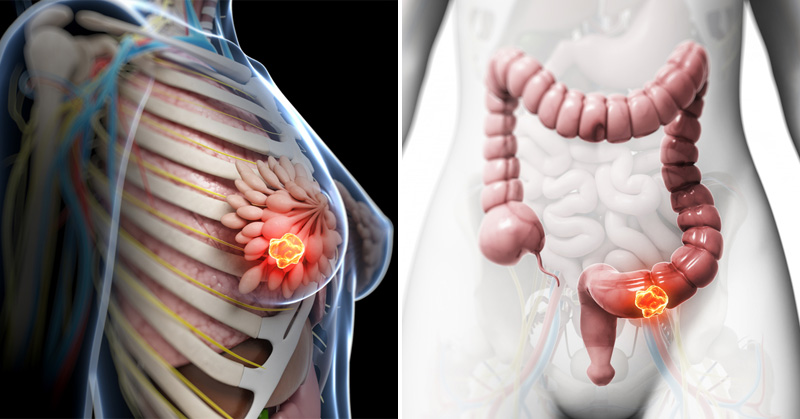If you’re reading this, I’ll assume you’ve had a Reese’s peanut butter cup at least once in your lifetime. I mean, who hasn’t?
Not only are they available year ’round, but they also come in fun shapes around the holidays. Do Reese’s trees and Reese’s eggs sound familiar? If you’re a fan of the popular peanut butter cups, your mouth is probably salivating right about now.
Unfortunately, a deeper look into Reese’s ingredients might make you question that last minute purchase at the checkout line. As delicious as they are, Reese’s peanut butter cups can be detrimental to your health.
A Little Background
Reese’s peanut butter cups were invented in the late 1920s by Mr. H.B. Reese. He was a dairy farmer and foreman for Milton S. Hershey. Inspired by Mr. Hershey, H.B. Reese decided to quit the dairy farming business and start his own candy company in his basement. And the rest is history. (1)
Now, Reese’s peanut butter cups come in many different shapes, sizes, and varieties. Although the chocolate to peanut butter ratio seems like perfection, the other ingredients in the popular candy are cause for concern. (2)

Ingredients In Reese’s Peanut Butter Cups
INGREDIENTS: Milk Chocolate [Sugar; Cocoa Butter; Chocolate; Skim Milk; Milk Fat; Lactose; Lecithin (Soy); PGPR]; Peanuts; Sugar; Dextrose; Salt; TBHQ and Citric Acid, to maintain freshness.
Here are the most questionable ingredients:
1. Soy Lecithin
Unless labeled as “organic” consider any soy to be genetically engineered. Yes, it’s a GMO food substance. Furthermore, in order to extract the lecithin, manufacturers use the solvent hexane, which separates the oil and the protein from soybeans. US manufacturers do not need to test for hexane residue in foods. (3)
By the way, if you have a soy allergy, there is no guarantee that the lecithin is completely free of soy proteins. Eat with caution!
2. PGPR
PGPR is short for polyglycerol polyricinoleate. Generally recognized as a safe food additive, PGPR in chocolate creates better emulsion and reduces viscosity, and that, therefore, makes chocolate easier to process and mold. (4)
So what’s the problem? PGPR replaces natural cocoa butter in chocolate recipes. Instead of using cocoa butter in chocolates, manufacturers turned to a cheaper alternative. PGPR comes from castor oil. Yes, the same castor oil that is, essentially, inedible — unless you have constipation, in which case castor oil will help clear you out. Have you ever experienced cramping after a chocolate binge? That may be the PGPR speaking to you.
Bottom line: it’s a synthetic additive derived from castor beans to replace the real thing. Even though the FDA gives it GRAS status, PGPR isn’t a natural food. (5)
3. TBHQ
TBHQ stands for Tertiary Butylhydroquinone (tBHQ). It’s derived from butane and can be extremely toxic. By the way, butane is a highly flammable gas. Do you want to eat that? (6)
So you may realize that this synthetic food additive should be nowhere near your food, GRAS status or not.
Side effects of ingesting tBHQ include nausea and vomiting, ringing in the ears, and delirium. Research has shown that tBHQ can damage the lungs and umbilical cells in humans. It can also cause stomach cancer. Unfortunately, children love peanut butter cups, yet some children who eat them may show anxiety, restlessness, and intensified ADHD symptoms, thanks to tBHQ. (7)
More recent research connects tBHQ will a depressed immune response, making people more vulnerable specifically to respiratory viruses. (8)

Make Your Own Organic Peanut Butter Cups
There’s no debating the delicious taste of Reese’s peanut butter cups. But do you really want to risk the potential health effects by eating them or feeding them to your children?
If peanut butter cups happen to be one of your favorite treats, there are safer ways eat them without putting your health at risk! Look for organic peanut butter cups at health food stores, or make your own.
Here’s one recipe for you to try:
Ingredients
- 12 muffin tin liners
- 12 ounces of organic dark chocolate
- 1 cup of organic peanut butter
- 1/4 cup of raw honey
- 1/4 teaspoon of organic salt
Directions
- Make the muffin cups more shallow by trimming them.
- Using a small saucepan, melt the chocolate on low heat while stirring continually. Leave it on for 1-2 minutes and be careful not to overcook.
- Using a teaspoon, put chocolate portions into the muffin cups.
- Place the whole muffin tin into the fridge to solidify.
- In a medium bowl, mix the organic peanut butter, raw honey and salt.
- Once the chocolate in the fridge has hardened, heat the peanut butter in a small saucepan over low heat to soften it.
- Put a small portion of peanut butter into each of the chocolate-coated cups leaving some room at the top for another layer of chocolate.
- Store the cups in the fridge for 10 minutes, then spread and flatten the peanut butter.
- Put the cups back in the fridge for 1 hour or until the peanut butter hardens.
- When the peanut butter is ready, rewarm the remaining chocolate and add a layer to the top of each candy.
- Cool it once again in your fridge until the chocolate hardens.
- Enjoy!
Watch the video to learn how to make a vegan-friendly version!


